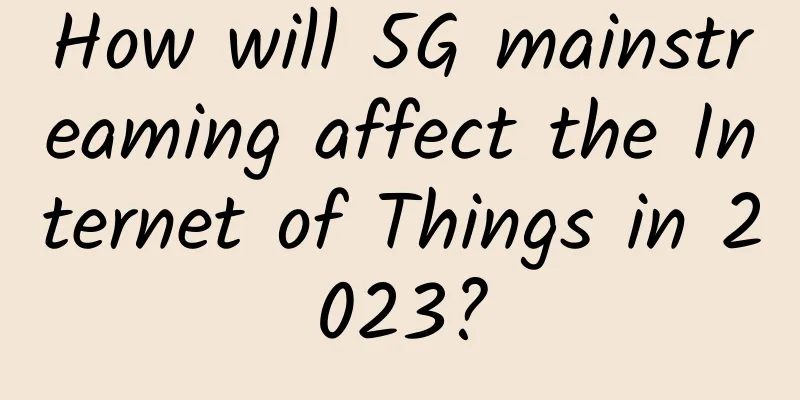5G application complex network security issues cannot be ignored

|
The commercial use of 5G has brought unlimited possibilities and promoted the development of high-tech industries. However, innovative technologies will inevitably give rise to new network security risks, bringing a certain degree of concerns to consumers.
5G services involve a multi-supplier environment, including various types of 5G service providers, including 5G equipment providers, mobile network operators, cloud service providers and third-party application developers. In addition, the 5G network itself is constructed by multiple types of networks and uses various connection technologies, which may lead to the risk of personal data and privacy being leaked. Therefore, the application of 5G also brings more network security issues that cannot be ignored. 5G networks not only serve individual consumers, but more importantly, they expand services to vertical markets, including healthcare, smart homes, and smart transportation, providing products or services to customers in a certain industry and bringing richer business development. In addition, 5G also brings about a globalized mobile Internet of Things, connecting businesses around the world. Different businesses will have different security requirements to meet different purposes, such as supporting low energy consumption requirements or efficient mobility security mechanisms. Therefore, 5G service providers need to provide flexible and efficient, end-to-end security protection, be able to respond to changes in business and scenarios, quickly update security protection mechanisms, and eliminate any potential threats. Although the emergence of 5G technology has changed the online world and brought new and unimaginable applications, the security issues it brings cannot be ignored. The security of 5G networks will always be the primary consideration for consumers to use 5G, and it is also an important factor driving the continuous development of 5G. 5G service providers should work together to continuously strengthen security solutions through technological innovation, formulate security standards to manage and control risks, and jointly build a secure and reliable 5G network to give consumers a shot in the arm. Information security in the 5G era is not at the same level and concept as that in the 4G era. This requires both the establishment of institutional standards at the national level and the advancement of technology. The application scenarios of 5G are completely different. The access of a large number of application scenarios such as the Internet of Things and autonomous driving will make the amount of data and the importance of security in the fields involved after the full application of 5G far greater than the 4G era when it was mainly used for communication technology. The transmission density of 5G is about 100 times higher than that of 4G. The number of terminals supported per square kilometer is also higher than that of 4G. At the same time, the upload speed of 5G is also relatively high. Therefore, big data and the Internet of Things will give 5G a boost. In the future, 5G will have industrial-level applications and city-level applications. Sensors in nuclear power plants may be connected by 5G, and connected cars on the road may be connected by 5G. Once the network is attacked, you will find that the consequences may be much more serious than they are now. In the era of 5G Internet and big data, the entire security landscape has changed, so traditional security protection is no longer effective. To put it simply, the network security belt will no longer adopt this fragmented, single-point defense or blocking. Instead, it will establish a big data-driven platform to collect all possible problems in the entire 5G network or the entire industrial Internet network, all network security incidents that have occurred or may occur, and all network security data. In this way, big data and data accumulation will form a "knowledge base" and "database" about network attacks to discover threat points and risk points, form threat intelligence, and then use threat intelligence to connect isolated and out-of-phase network security products at each node in the entire network, realizing true connectivity, coordinated defense, and in-depth protection. |
>>: Researchers develop first 5G switch capable of accessing next-generation wireless speeds
Recommend
What stage have 5G, autonomous driving, and artificial intelligence reached? One picture can tell you
On August 29, Gartner, the world's most autho...
How have the three major operators been doing in the past nine months?
[[248346]] With China Telecom announcing its oper...
How Wi-Fi 6 and 5G are ushering in a new era of edge connectivity
[[353891]] Today, the number of IoT devices is gr...
5G + Internet of Things: Providing development opportunities for the popularization of smart lamp poles
[[392057]] At present, the smart light pole indus...
Development is accelerating again, and 5G plans and goals for major provinces and cities in my country are released!
[[421464]] As an important carrier for the develo...
JD.com's Lv Jianwei: Black technology leads the new era of e-commerce
[51CTO.com original article] On July 21-22, 2017,...
5G and 6G networks will empower emergency responders and smart city projects, researchers say
While 5G and 6G networks could help first respond...
SmartHost: $4.95/month KVM-quad core/8GB memory/40GB NVMe/2TB monthly traffic/29 data centers available
SmartHost recently offered special discount codes...
How to Make Ethernet Cable Longer
Looking to extend your existing Ethernet cable, o...
Illustration | You call this a thread pool?
[[375802]] This article is reprinted from the WeC...
Difficulties and solutions faced by ONOS dynamic expansion
1. ONOS consistency guarantee ONOS mainly include...
Why do I always see pop-up ads? Yes, it’s a DNS problem
What is DNS? Each IP address can have a host name...
Five driving forces and four challenges for 5G development
At the end of June, MWC19 Shanghai was once again...
Best Practices for Stream Computing Processing with Flink on Zeppelin
Content framework: Big Data Overview Flink Learni...
Juniper Networks: AI empowers experience first
In the era of the Internet of Everything, with th...









